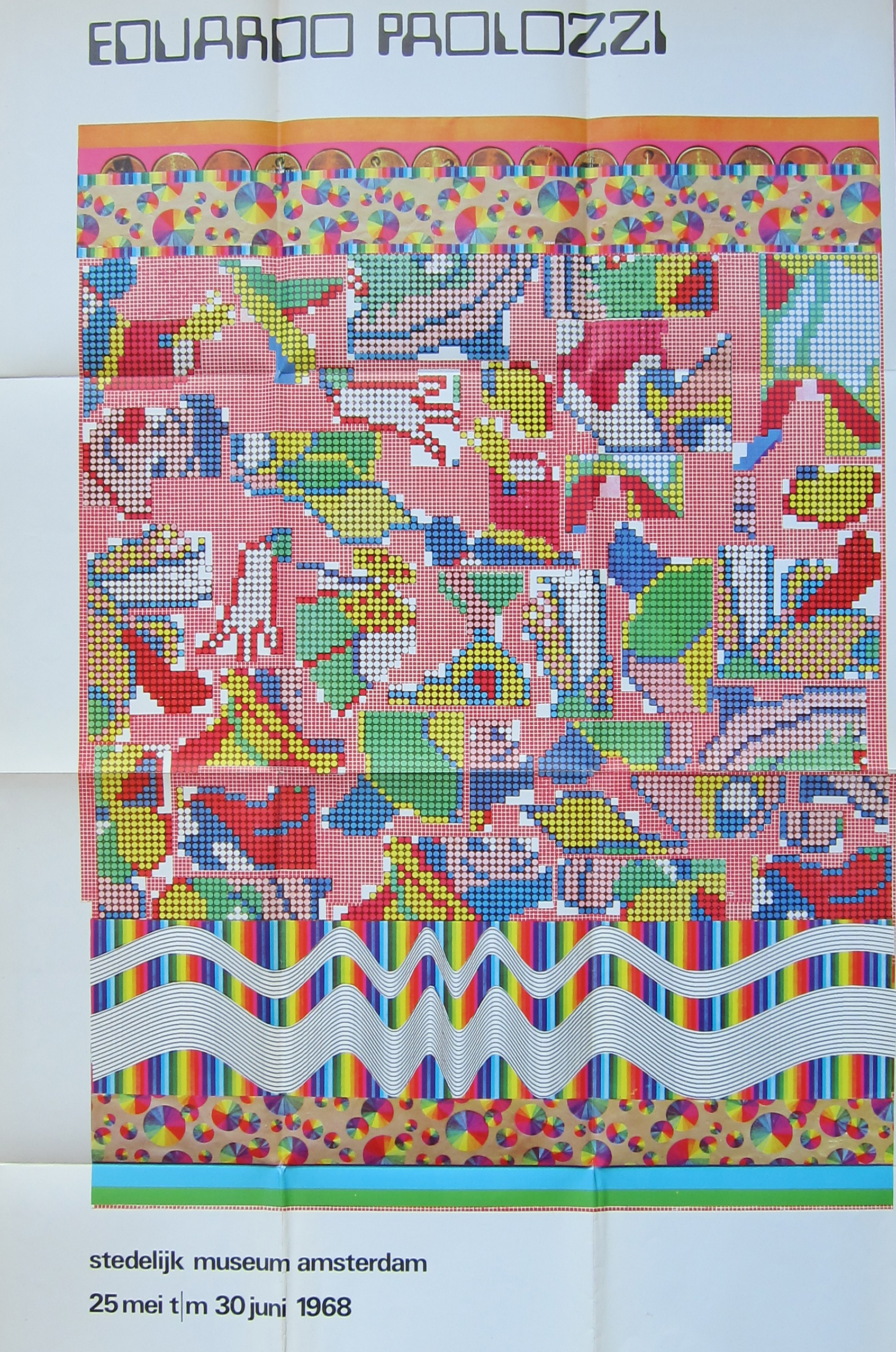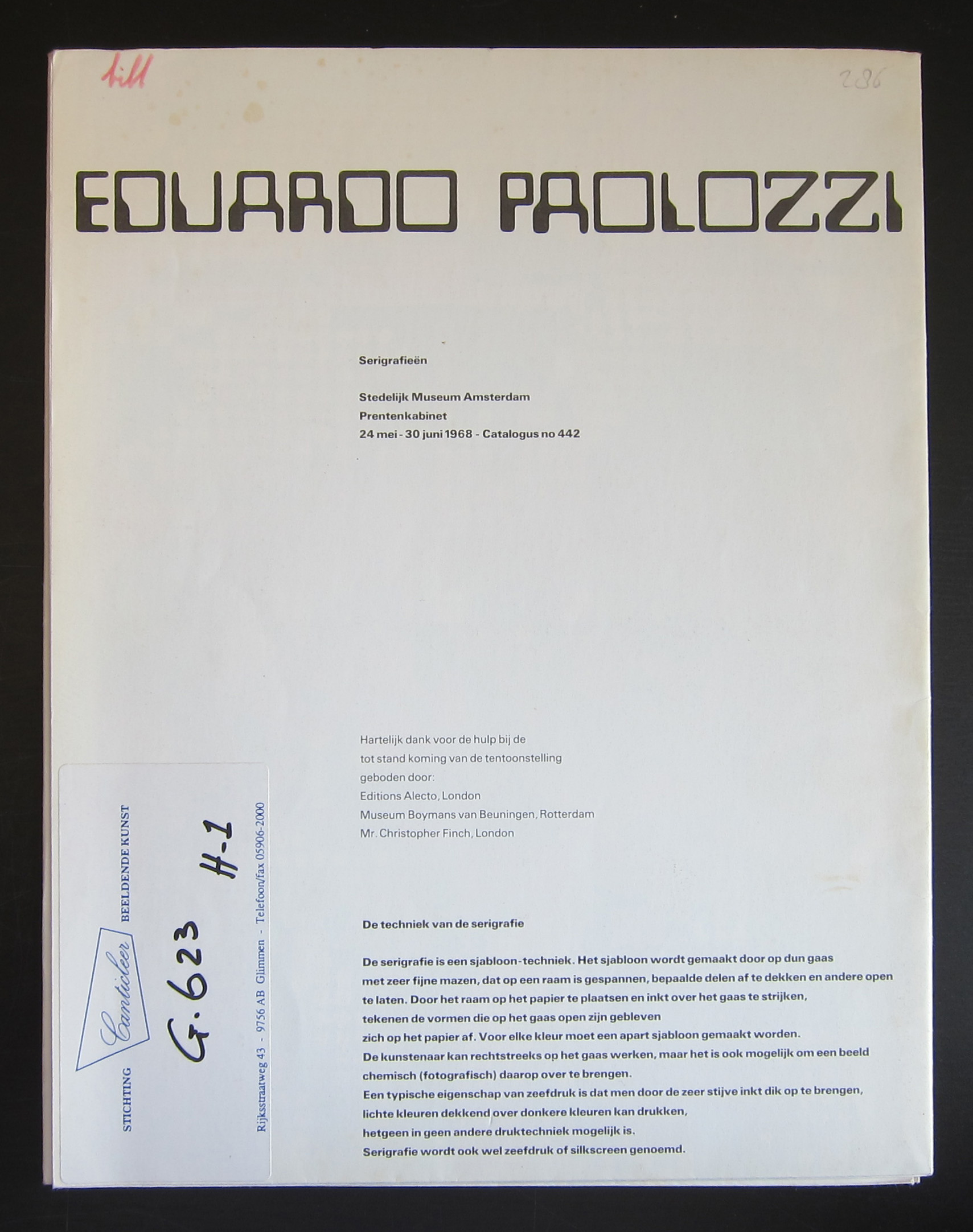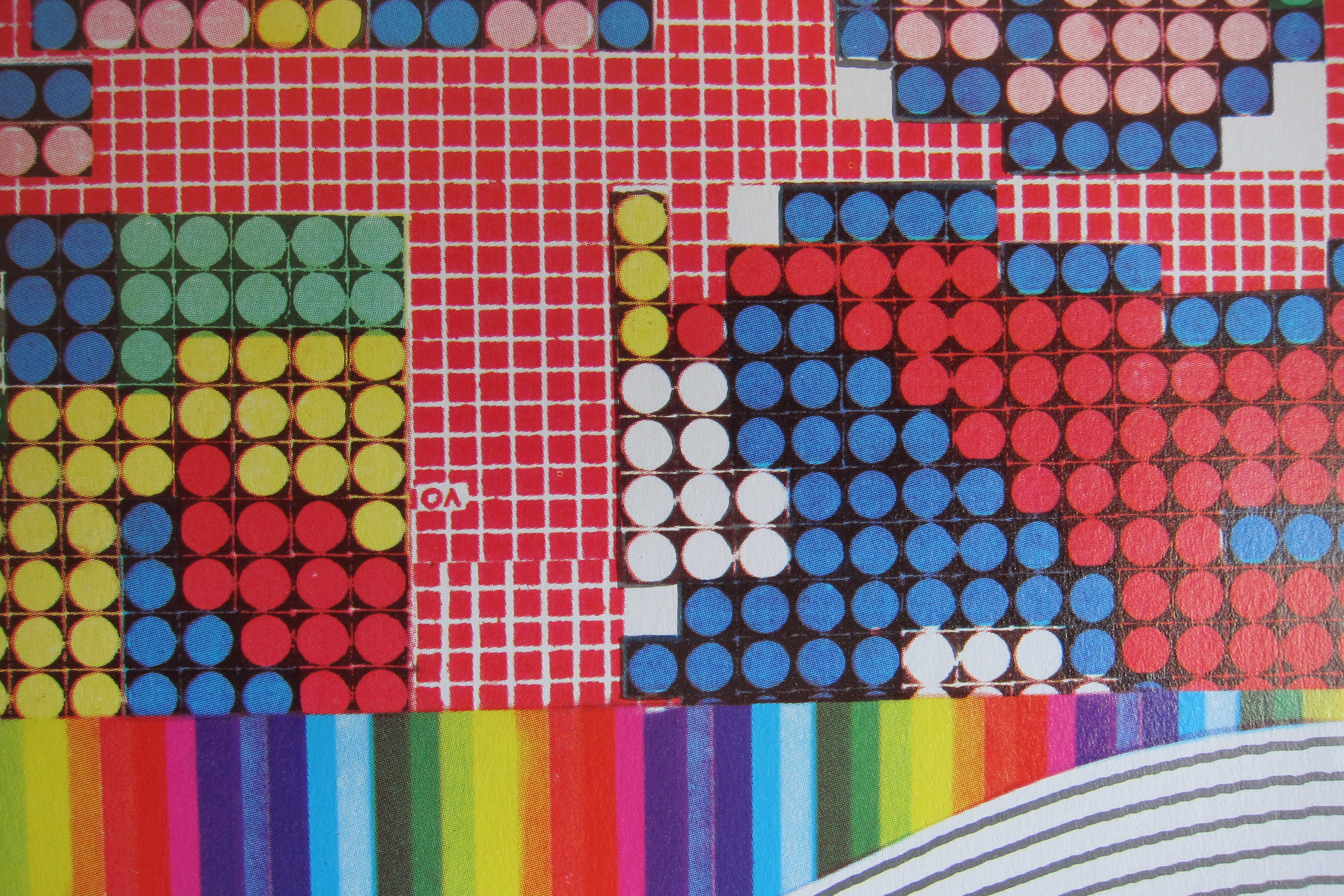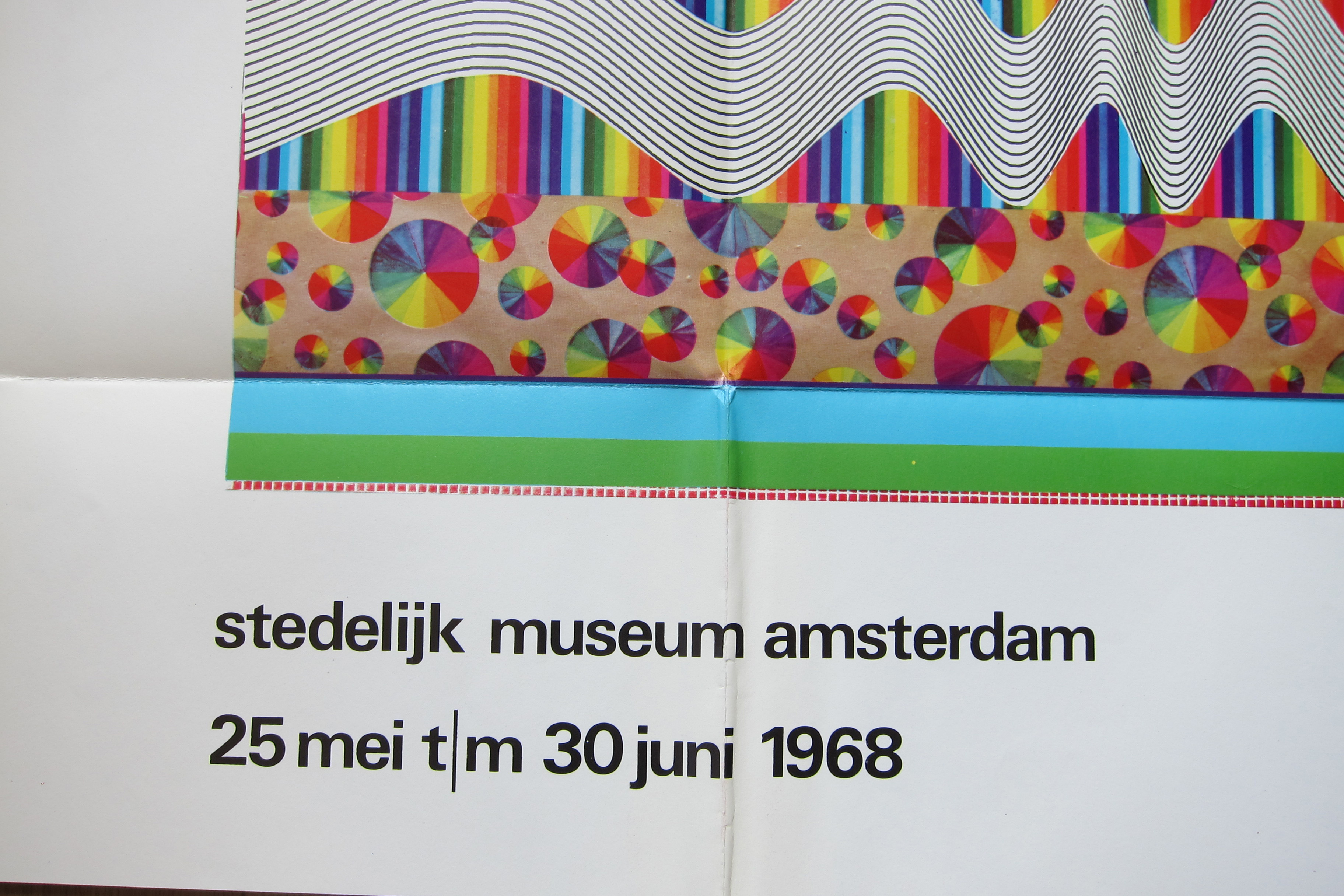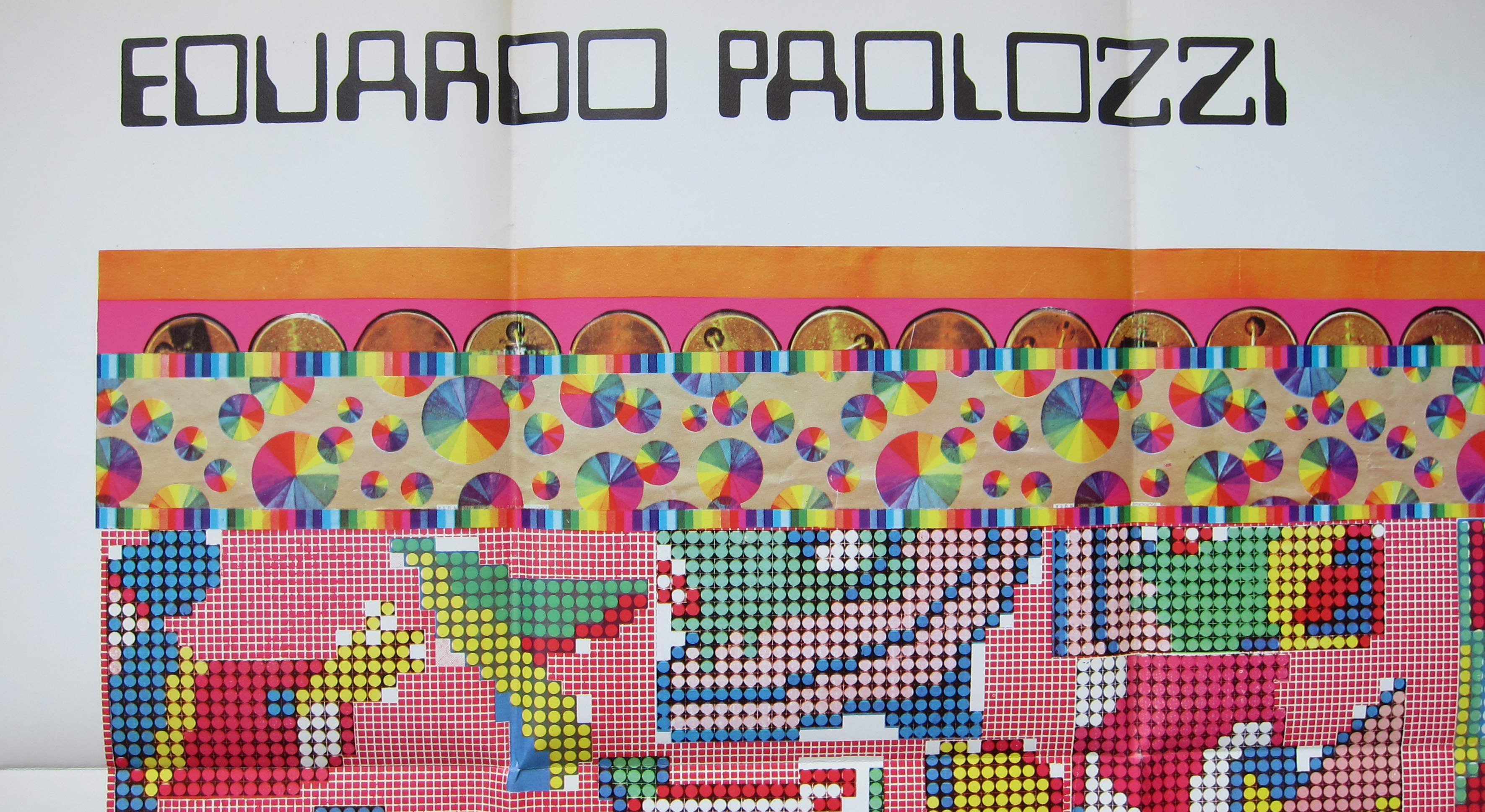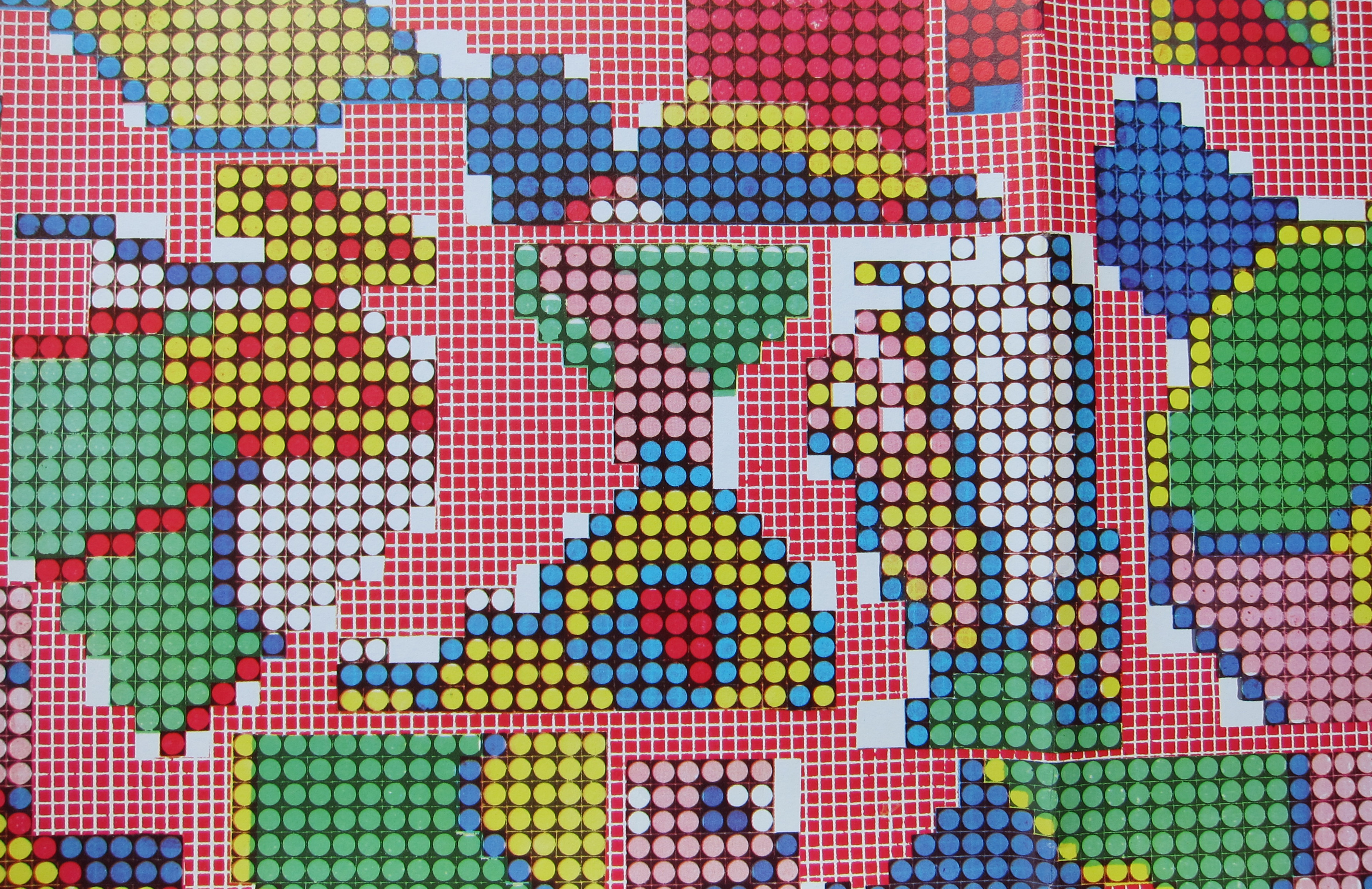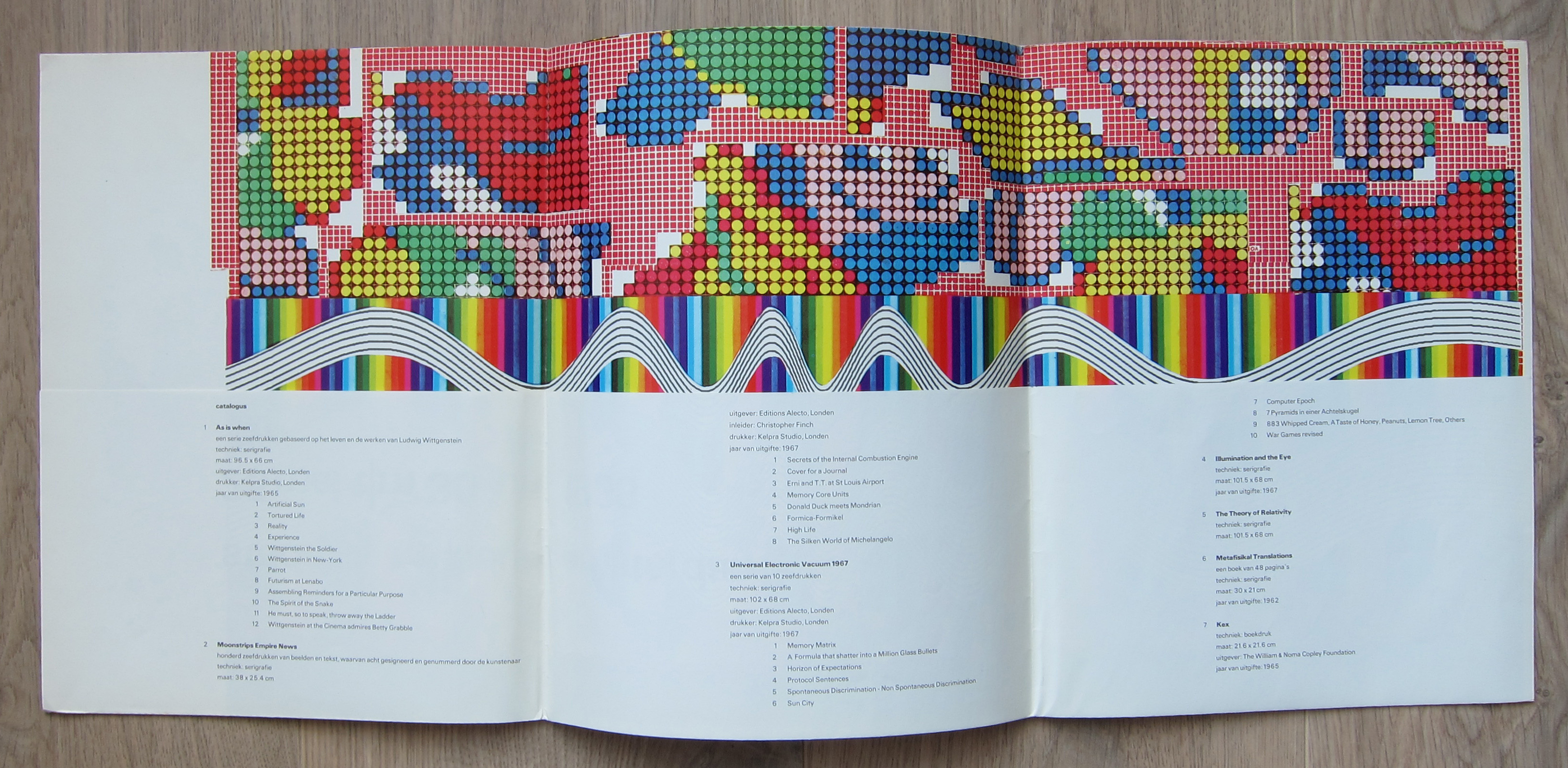
We are relocating!
In the coming weeks we will be occupied with packing and moving our internet store inventory. The entire collection needs to be transferred from Leidschendam to Oegstgeest, and this will take some time.
If all goes according to plan, we will be fully operational again on November 21st, but until then, it may happen that we are unable to immediately assist you with your order. We ask for your understanding, but as soon as possible, your order will be fulfilled with the utmost speed.
Eduardo Paolozzi, a remarkable figure in the world of Pop Art, was a sculptor and printmaker. His elaborate public projects, including the British Library courtyard and the London Underground, transformed spaces and captured the public’s attention.
Raised in Edinburgh by Italian parents, Paolozzi was greatly influenced by the American magazines he read, often collecting and pasting his favorite pictures into a scrapbook. This habit eventually became a defining technique in many of his iconic pieces. However, when Italy joined forces with Germany during World War II, Paolozzi, then a teenager, was labeled an enemy alien and interned. His father and grandfather were tragically killed when the ship they were on was attacked by a German U-boat.
After his release from internment, Paolozzi was conscripted into the army but managed to secure a discharge by feigning madness. He then pursued his passion for art, studying in both Edinburgh and London before moving to Paris in 1947. There, he met and was greatly inspired by renowned artists such as Georges Braque, Constantin Brancusi, and Alberto Giacometti. It was during this time that he created I Was A Rich Man’s Plaything, now widely considered to be one of the pioneering examples of Pop Art.
However, it wasn’t until 1952 that Paolozzi publicly displayed this work and over 40 other collages at the inaugural meeting of the Independent Group. Along with other influential artists, including photographer Nigel Henderson and sculptor Richard Hamilton, Paolozzi championed the use of found objects and popular culture in art. Their revolutionary ideas were brought to life in the groundbreaking 1956 exhibition, This is Tomorrow, held at the Whitechapel Gallery.
In the 1960s, Paolozzi continued to work prolifically, taking on teaching positions, experimenting with sculpture, and further developing his screenprinting skills. One of his most notable works from this time is As Is When, a series of prints inspired by the renowned philosopher Ludwig Wittgenstein. For his contributions to the arts, Paolozzi was bestowed with the title of CBE in 1968 and elected a Royal Academician in 1979.
www.ftn-books.com has several Paolozzi titles available.










